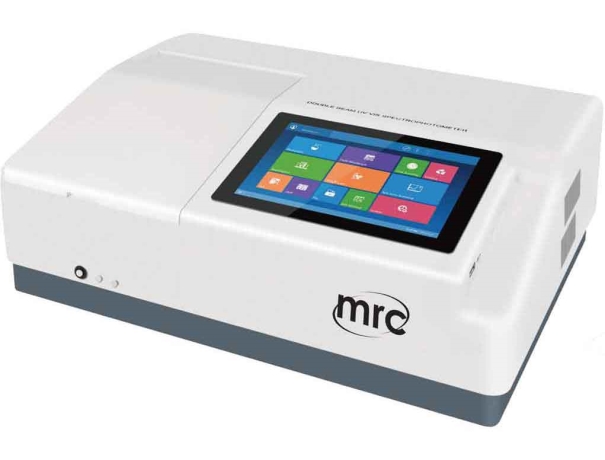Double beam spectrophotometers are vital tools in scientific research, providing precise and reliable measurements of light absorption in various samples.
What is a Double Beam Spectrophotometer?
A double-beam spectrophotometer is an analytical instrument used to measure the amount of light absorbed by a sample. It splits a beam of light into two paths: one passes through the sample, and the other passes through a reference. This setup allows for continuous comparison and high accuracy in measurements.
In scientific research, precision is key. Double beam spectrophotometers offer enhanced accuracy and stability, making them indispensable in fields like chemistry, biology, and environmental science.
What are Spectrophotometry?
Spectrophotometry is the quantitative measurement of the reflection or transmission properties of a material as a function of wavelength. It's a method used to analyze the concentration of substances.
How Spectrophotometry Works
The process involves passing light through a sample and measuring the intensity of light reaching a detector. The amount of light absorbed by the sample gives insights into its properties.

Components of a Double Beam Spectrophotometer
Light Source
The light source emits the initial beam of light. Common sources include tungsten lamps for visible light and deuterium lamps for ultraviolet light.
Monochromator
The monochromator selects the specific wavelength of light to be used in the measurement, ensuring precision.
Sample Holder
The sample holder is where the sample to be analyzed is placed. It is usually designed to hold cuvettes or test tubes.
Detector
The detector measures the intensity of light after it has passed through the sample and reference, converting it into a readable signal.
Data Output System
This system processes the signal from the detector, displaying the results in a user-friendly format.
Working Mechanism of Double Beam Spectrophotometers
Light Pathway
In a double beam spectrophotometer, the light source is split into two paths using a beam splitter.
Sample and Reference Beams
One beam passes through the sample, while the other passes through a reference. This simultaneous measurement ensures continuous comparison.
Signal Comparison
The signals from both beams are compared, correcting for any fluctuations in the light source or detector, leading to more accurate results.
Applications of Double Beam Spectrophotometers
Pharmaceutical Industry
Used to analyze drug formulations and ensure consistency in production.
Environmental Monitoring
Essential for measuring pollutants and ensuring environmental safety.
Biotechnology
Helps in studying biological samples, including DNA and proteins.
Clinical Diagnostics
Used in various diagnostic tests to measure substances in blood and other fluids.
Food and Beverage Industry
Ensures quality control by measuring the composition of food and drinks.
Advantages of Double Beam Spectrophotometers
Higher Accuracy
Continuous comparison between sample and reference enhances measurement precision.
Better Stability
Reduced drift over time ensures consistent results.
Continuous Measurement
Allows for real-time monitoring and analysis.